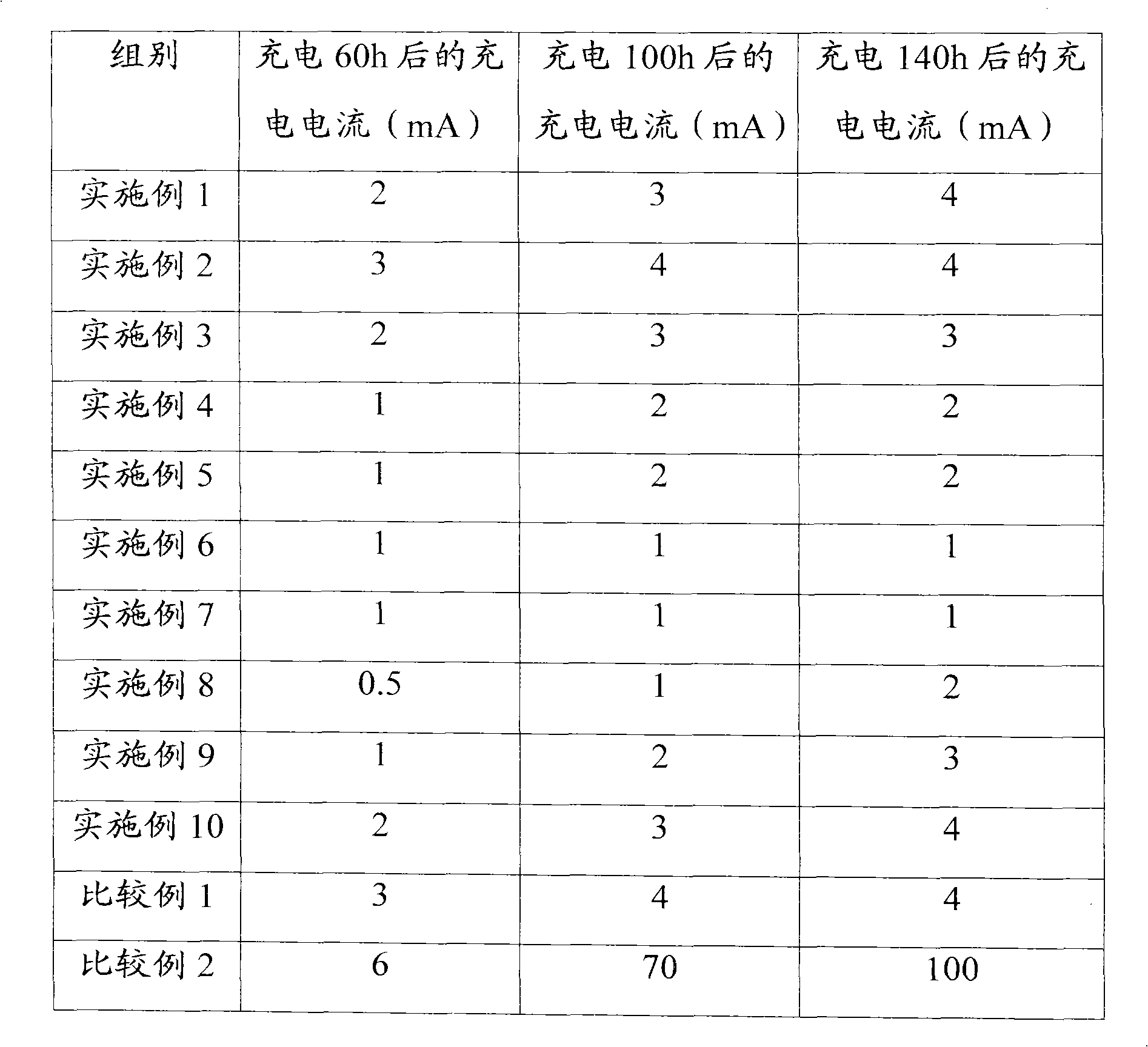Lithium ion battery and membrane thereof
A technology for lithium-ion batteries and diaphragms, which is applied in secondary batteries, battery pack components, circuits, etc., and can solve problems such as misalignment between diaphragms and electrodes, failure to form adhesion, and short-circuiting of batteries
- Summary
- Abstract
- Description
- Claims
- Application Information
AI Technical Summary
Problems solved by technology
Method used
Image
Examples
Embodiment 1
[0023] Preparation of diaphragm:
[0024] A polypropylene (PP) porous membrane is used as the porous membrane substrate 1, and the surface of the porous membrane substrate 1 is firstly treated with a raising agent to enhance its surface tension.
[0025] Silicon dioxide (SiO 2 ) ceramic particles are fully mixed with polyvinylidene fluoride (PVDF) solution to obtain a ceramic material. Then, the ceramic material was coated on both surfaces of the porous membrane substrate 1 by printing and coating, and dried to obtain a ceramic material layer 2 with a thickness of 0.5 μm.
[0026] Polyacrylonitrile (PAN) was formulated into a solution, and then coated on the surface of the ceramic material layer 2 by printing and coating, and dried to obtain a polymer adhesive layer 3 with a thickness of 0.1 μm and a porosity of 30%. .
[0027] Preparation of positive electrode sheet:
[0028] Lithium cobalt oxide (LiCoO 2 ), conductive carbon (Super-P) and polyvinylidene fluoride (PVDF) ...
Embodiment 2
[0034] Preparation of diaphragm:
[0035] Using a polyethylene (PE) porous membrane as the porous membrane base material 1, the porous membrane base material 1 is surface-treated by pressing a roller with an uneven surface to enhance its surface tension.
[0036] Aluminum oxide (Al 2 o 3 ) ceramic particles and sodium carboxymethyl cellulose (CMC) solution are fully mixed to obtain a ceramic material. Then, the ceramic material is coated on both surfaces of the porous membrane substrate 1 by means of extrusion coating, and dried to obtain a ceramic material layer 2 with a thickness of 1 μm.
[0037]Polyethylene oxide (PEO) was formulated into a solution, which was then sprayed onto the surface of the ceramic material layer 2 and dried to obtain a polymer adhesive layer 3 with a thickness of 0.5 μm and a porosity of 40%.
[0038] The preparation method of the lithium-ion battery is the same as that of Example 1, and will not be repeated here.
Embodiment 3
[0040] Preparation of diaphragm:
[0041] Use polypropylene / polyethylene / polypropylene (PP / PE / PP) porous film as the porous film base material 1, first adopt the pressing roller with uneven surface to press the porous film, and the porous film base material 1 is surface treated, with increase its surface tension.
[0042] Titanium dioxide (TiO 2 ) The ceramic particles are fully mixed with the styrene-butadiene rubber (SBR) solution to obtain a ceramic material. Then, the ceramic material was coated on both surfaces of the porous membrane substrate 1 by means of transfer coating, and dried to obtain a ceramic material layer 2 with a thickness of 3 μm.
[0043] Polymethacrylate (PMMA) was formulated into a solution, which was then sprayed on the surface of the ceramic material layer 2 and dried to obtain a polymer adhesive layer 3 with a thickness of 1 μm and a porosity of 50%.
[0044] The preparation method of the lithium-ion battery is the same as that of Example 1, and w...
PUM
| Property | Measurement | Unit |
|---|---|---|
| Thickness | aaaaa | aaaaa |
| Thickness | aaaaa | aaaaa |
| Thickness | aaaaa | aaaaa |
Abstract
Description
Claims
Application Information
 Login to View More
Login to View More - R&D
- Intellectual Property
- Life Sciences
- Materials
- Tech Scout
- Unparalleled Data Quality
- Higher Quality Content
- 60% Fewer Hallucinations
Browse by: Latest US Patents, China's latest patents, Technical Efficacy Thesaurus, Application Domain, Technology Topic, Popular Technical Reports.
© 2025 PatSnap. All rights reserved.Legal|Privacy policy|Modern Slavery Act Transparency Statement|Sitemap|About US| Contact US: help@patsnap.com



